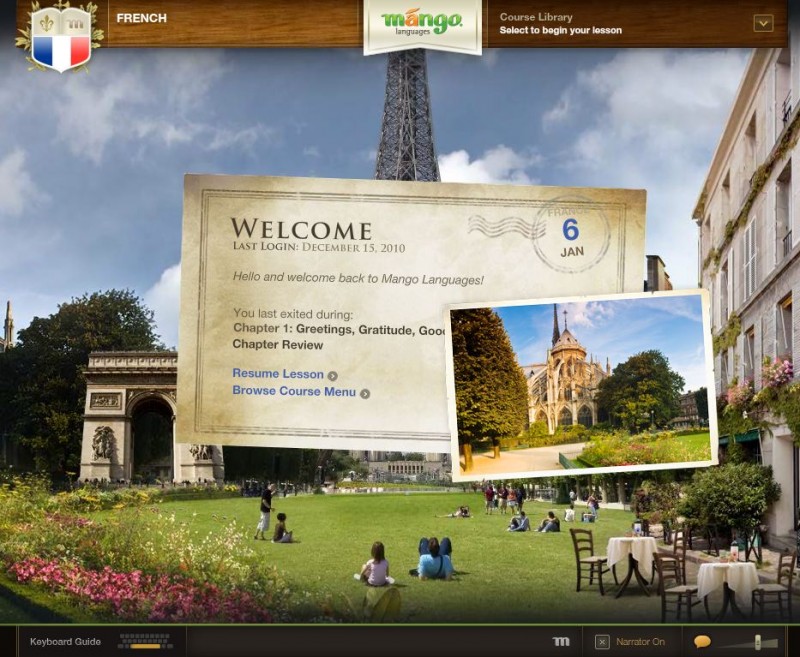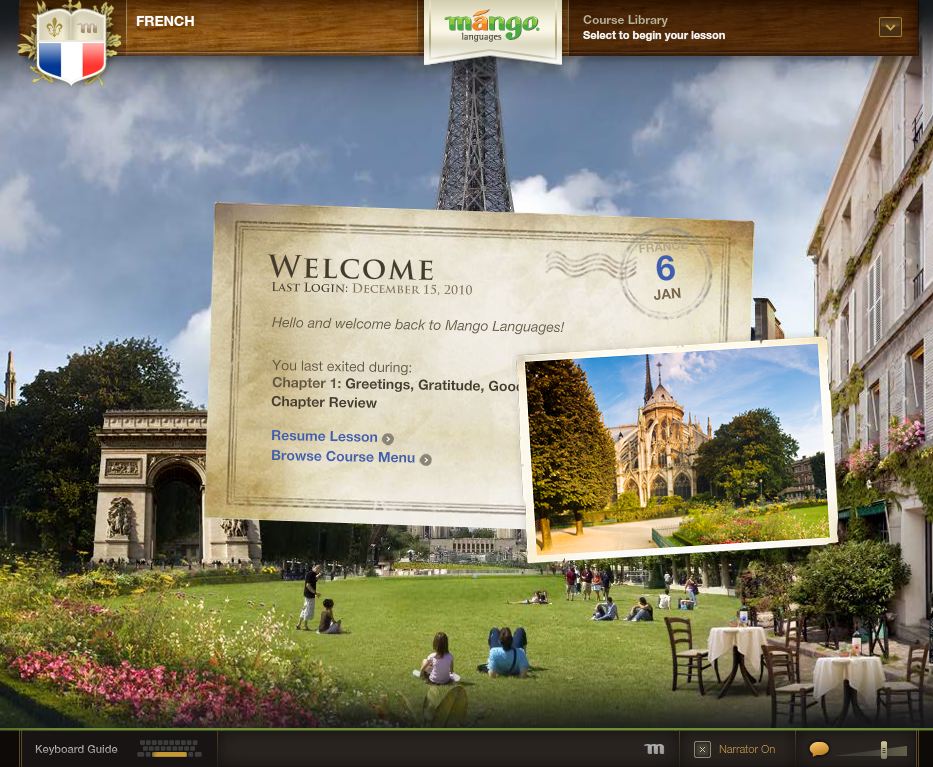
Vagabondish is reader-supported. When you buy through links on our site, we may earn a small affiliate commission. Read our disclosure.
There are two primary schools of thought on language learning: rote memorization of vocabulary and grammar OR practical, in-field comprehension of real world conversations. I don’t believe there’s an inherently good or bad language learning technique. It’s all a matter of what works for you.
Personally, I prefer the latter of the two as it’s the method that makes the most sense and has always worked best for me. As a traveler, I don’t require a 100% comprehensive knowledge of every single noun, verb, etc. I typically need to know just enough to get me around, order a beer and find the bathroom.
Fortunately, Mango Languages understands that, opting to “throw students into the fire”, so to speak. I took their shiny new Mango Passport French software for a spin over the past few weeks and have been thrilled with the results.
The Skinny
The gist of Mango’s language learning methodology is best explained in their own words:
Every Mango course, chapter and lesson incorporates our Intuitive Language Construction methodology, designed to simulate the way people learn when actually surrounded by a foreign culture through practical conversation.
Intuitive Language Construction increases what you learn, AND your ability to use it. Each lesson covers all four key-language components””Vocabulary, Pronunciation, Grammar and Culture — while maximizing comprehension and retention. A working knowledge of each component, and the ability to combine them correctly, is crucial to being understood and accepted by native speakers.
… or, if you prefer, their own video:
In Detail
Flow
The software is appropriately sectioned into chapters and then lessons that reveal the building blocks of everyday conversational language. It begins with the basics (e.g. Hello, Goodbye, How are you?) and progresses to more complex and useful sentence structures (e.g. Excuse me, may I have the bill?).
Features
The software allows you to interact with just about any bit of text, etc. on the screen at any given moment. For example, hovering over a particular word will reveal its phonetic spelling and clicking the word will cause the narrator to carefully articulate it. This is particularly helpful to slow down the narrator’s speech to better understand the individual components of a given phrase.
Cultural notes peppered throughout the software reveal pertinent tips relevant to a given phrase that you’ve just learned.
Another excellent feature is the ability for users to record their own voice and compare playback to the native speaker. It’s a great way to determine the accuracy of your pronunciation.
Design
As a design geek, one of my favorite parts of the software is the extremely intuitive interface. Users can navigate with a combination of keyboard shortcuts and mouseclicks, depending on their preference. The look and feel is both sleek and modern – a testament to the fact that Mango put serious thought into the design and aesthetics.

Pricing & Availability
In total, seventeen languages are available, including:
- Chinese (Mandarin)
- English
- Farsi
- French
- German
- Greek
- Hebrew
- Hindi
- Italian
- Japanese
- Korean
- Portuguese
- Russian
- Spanish
- Thai
- Turkish
- Vietnamese
Two product options are available for each language – the downloadable Mango Passport software ($150) OR Mango Passport On the Go MP3 ($100) for $100. Or, snag the combined bundle for just $200 (a $50 discount). All directly from MangoLanguages.com.
Not sure if it’s right for you? Take one of their lessons for a spin for free.
Bottom Line
Of the language learning courses and software I’ve used, Mango Passport has been my favorite hands-down. It’s fun, intuitive, and cleverly designed. To be honest, for $150, the a la carte software option is an absolute bargain. C’est bon! C’est bon! Highly recommended.


